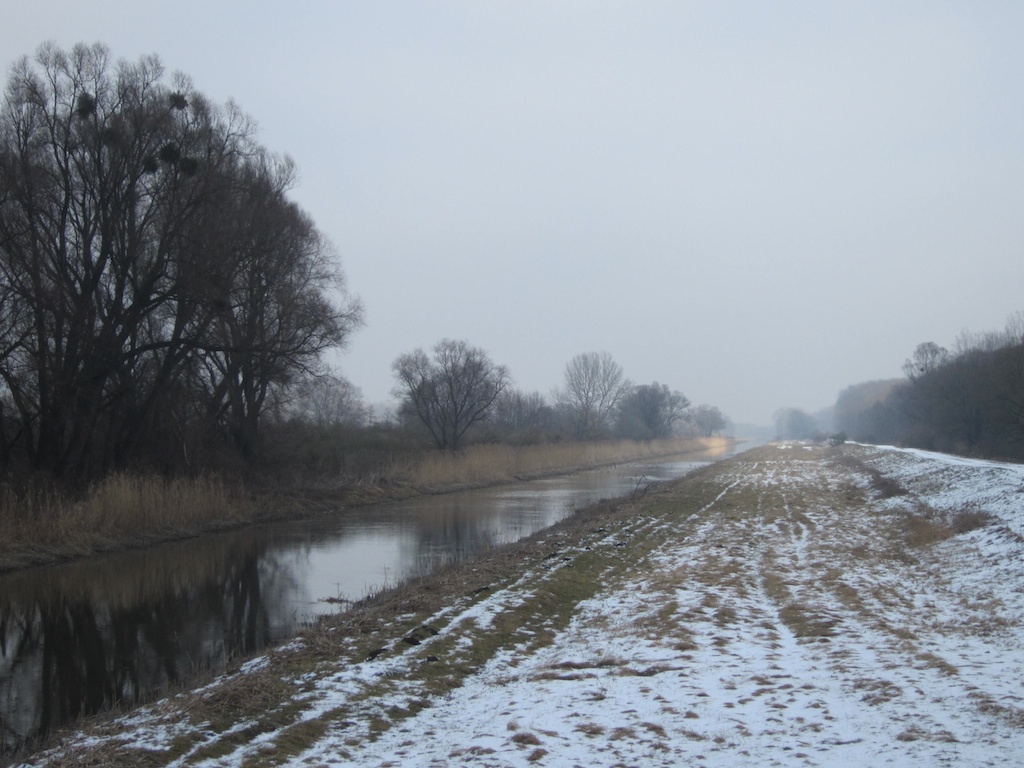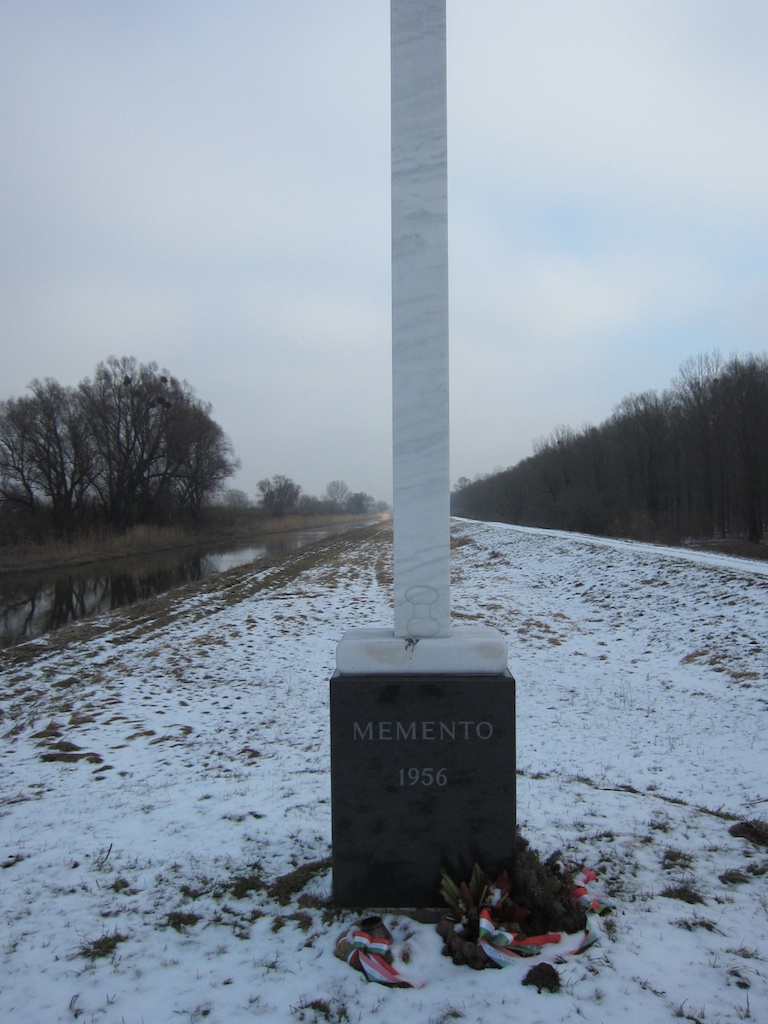‘If you cross the bridge you are in Hungary’ was all the book had said. There was no reference to the memorial or that for many in 1956 it was a bridge to freedom. The book in question was no travel guide of the normal kind but ‘Where to watch birds: World Cities’.
Bridge at Andau
The Hungarian/Austrian Border
We had set out from Vienna heading to the Hansag with thoughts of eagles and bustards. Eagles we saw in the flat plains of south eastern Austria but the Tuzok – the Hungarian National bird – would have to wait for another visit.
Driving down the road from Andau, what caught our eye were not birds, but strange pieces of art lining the track. All weathered wood and iron. They seemed out of place in the vast rural plain.
As we neared the canal we parked and climbed the wooden bird tower. It looked northwards. Twenty odd years ago the tower would have been on the otherwise of the canal and would not have been for watching birds. It would have been for human watching, and watching of a more deadly kind. A red kite drifted over the border heading north. A beautiful bird gently hanging in the wind. I rang my colleague Dr. Kadas’ to share with her that I was about to cross the wooden bridge and cross over into the land of her birth. She said say ‘Jo napot’ to Magyar. We laughed.
It was just a wooden bridge across a narrow canal. As we crossed a couple of Great White Egrets, grey heron were disturbed form their quiet fishing and lifted themselves from the Austrian bank and moved further away landing on the Hungarian bank. Quiet, rural there was a feeling of being miles from the throng of a modernity.
You couldn’t miss the cross. It was on the left hand side of at the bridge’s end in Hungary. A cross with worlds in Hungarian and German. At it’s base were a few wreaths, with ribbons in the colours of both countries, laying in the cold snow. We looked at for a while and I rang Dr. Kadas’s again from the Hungarian side and that was that. It was just a memorial. So we recrossed the Bridge at Andau back to Austria.
It was only later that a niggle in my brain urged me to investigate. And soon enough a few searches the Bridge at Adnau and the memorial’s significant came to light.
Escape from Hungary 1956
There are many places to read about the escape from Hungary. This particular extract is one that resonates with the fact that the memorial was not even mentioned in my book or even in many of the guidebooks that have sort mention of the bridge.
Among the people I remember with immense gratitude are the students from the universities of Vienna. Many of them sacrificed an entire semester of study to provide essential services to the refugees. Standing on the border and watching the Russian patrols spray the canal banks with bullets was very dangerous. The exodus of over 200,000 refugees was a tremendous drain on the resources of the Austrian state, especially for the immediate neighbors in Burgenland. They opened up their homes and hearts to strangers, giving of themselves generously and freely, never expecting or receiving anything in return. I would like to shake their hands and thank them all individually, but Andau is now full of a new generation. People hardly know anymore where the famous bridge is located.
Escape from Hungary: Three Dark, Cold Days in 1956 by Joseph Nagyvary
The bridge at Andau was blown up suddenly on the 21st November. The border was strongly manned and watched by Hungarian and Russian border patrols. Despite this, hundreds of refugees still managed to cross the border, arriving exhausted, wet and cold at the nearest border post in Andau.Many refugees crossed the bridge before it was blown up by the Russians..
In 1992 the ‘Association for International Understanding – The Bridge at Andau’ was formed and the bridge we crossed in January this year was rebuilt in 2006. The art work along the track, which is known as the ‘Road to Freedom’ was created between 1992 – 1996.
On my return I discussed this with my friend Dr. Kadas. She told me that her mother-in-law escape through the marshes on the Hungarian/Austrian border. Last Friday I went for a meeting at LSBU with Kelly Horvath. With a surname like that I knew she was of Hungarian origin. We got talking – me telling her about all my trips to Hungary, which I love. She mentioned that she thought her grandfather had come to England in and around 1956. This meeting stimulated me to write this blog.
Watching the red kite fly over the border with such ease contrasts with the plight and flight of the Hungarian refugees The humanity of the local people of the Burgenland is celebrated in all the things I have read about the Bridge at Adnau and where there was once a border with gun towers there is one for birds.
And know there is also a tri-nation project between Hungary, Austria adn Slovakia to preserve the last remaining puszta in the Hansag and increase the numbers of the Great Bustard’s of the three countries.
So perhaps next time I have the chance to drive the Road to Freedom I will see a Tuzok that may perhaps have drifted over the border from Hungary without a care in place that echoes with bravery, humanity and freedom.

